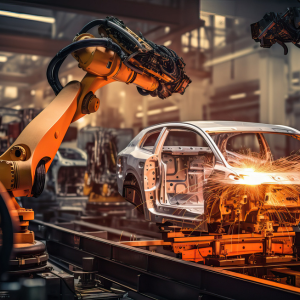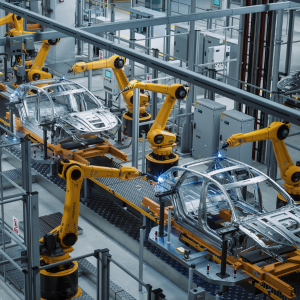2021 Manufacturing Trends
Post By: Ryan King On: 26-10-2020 - Industry 4.0 - Industry Trends - Manufacturing
2020 has been a year of great change. We've barely assimilated the new modes of operating under Industry 4.0, and Industry 5.0 has begun to emerge over the horizon. This has been fuelled to a greater degree by the global pandemic, and the need for more reliance on human/machine collaboration.
Last year, we made some predictions about the future of manufacturing in 2020, and many of these topics continue to be on the agenda for 2021. The main features of industrial development are still high on our list, but human safety is now paramount. The following are therefore likely to be the leading 2021 manufacturing trends:
- Safety in the workplace
- Planning recovery from COVID-19
- What to expect in the job market
- The move towards B2C instead of B2B
- Remote service models supported by VR and AR
- Increased reliance on predictive maintenance
- Moving deeper into the IIoT
- Greater exploitation of big data and real-time analytics
- Advances in resource planning
- Changes in supply chain and sourcing of materials
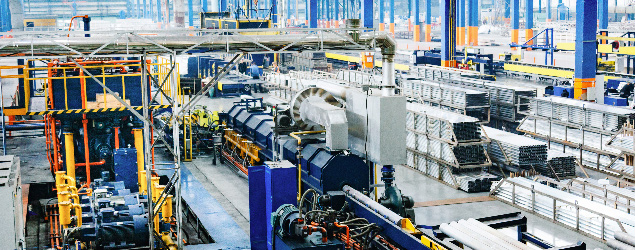
1. Safety In The Workplace
Health and safety at work has always been a priority, but this year the pandemic has given this topic a whole new significance. As we head into 2021, employee safety is uppermost in future planning, and manufacturers are taking various measures to stay within the prescribed guidelines. On top of the existing basic safety precautions, employers will now have to incorporate HSE measures, such as enforcing social distancing, throughout the plant. In addition, workers will be expected to keep themselves and their workspace properly sanitised, for which employers are also responsible. Manufacturers must monitor their facilities carefully to see who enters and exits, and to keep a trace on equipment and individuals that might come into contact with external visitors.
2. Planning Recovery From COVID-19
The drastic and sad reality of the pandemic is that some companies and their products will disappear forever from the marketplace. Those who survive will have no standard strategy for such an eventuality, which means that determined manufacturers should start planning straight away for what might come next. Some might refer to it as a 'reset' strategy, inasmuch as such a thing is possible with such an unpredictable future. This strategy takes a three-fold approach to restructuring: response, recovery and renewal.
In the response phase, manufacturers will already have taken any actions required to maintain the safety of personnel and the continued operation of essential business functions.
The recovery phase depends on when and if the business can reopen, how to budget for the required changes, and whether staff need to be (re)hired, supplies restocked and marketing strategies revised.
Provided the recovery goes ahead as expected, the renewal phase will require the execution of the revised strategies throughout the business, taking on board what has been learnt during prior phases to formulate a new framework.
Manufacturer reset strategies will depend on how hard the pandemic has hit their business, and might vary from a total revision of the business model to digitisation.
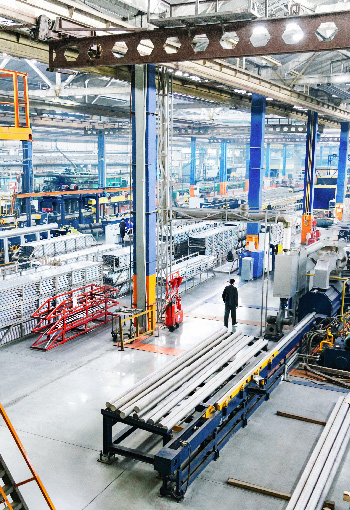
3. What To Expect In The Job Market
Every business, including manufacturing, has suffered from mass lay-offs and furloughs due to COVID-19, and the job market continues to be uncertain in all sectors. Manufacturers have seen the disruption in varying degrees: those producing non-essential goods, for example, have had to reduce their staff significantly, while those who supply essential goods like PPE have had to add product lines, increase production and take on new workers to meet the unprecedented demand. Some companies whose staffing has been forcibly reduced have been able to compensate by optimising their product lines and processes with IoT automation. This can help to control costs and maximise profitability.
2021 manufacturing trends in staffing will likely continue to evolve, based on the demands of the pandemic and safety measures. Any companies in a position to rehire personnel may well be looking for different areas of expertise, particularly in IT and data analysis.
4. The Move Towards B2C Instead Of B2B
Another 2021 manufacturing trend is that many more companies will be making the transition towards direct sales. This means moving towards a B2C (business-to-consumer) model instead of the more traditional B2B (business-to-business). This method offers a number of attractive benefits, including:
- Price control – manufacturers can set and reinforce their own retail prices
- Brand control – manufacturers have full control over their brand without the risk of it being misrepresented or diluted by third parties
- Increased profits – manufacturers can sell products at their full value, instead of having to supply them at wholesale prices to a third party
- Faster time to market – manufacturers can complete the product development cycle and go directly to market, instead of the more traditional and time-consuming retail sales route
- Better customer data – selling directly B2C allows manufacturers to improve their products, sales and customer relationships through the collection and analysis of their data
5. Remote Service Models Supported By Video, VR And AR
The pandemic has greatly impacted those manufacturers who provide field service technicians for on-site installation and repair of equipment. On the positive side, it has given a boost to assistive technologies which can be shared remotely, such as better video conferencing and VR/AR (virtual or augmented reality.) These technologies have enabled technicians to talk their customers through basic troubleshooting and servicing tasks and demonstrate them visually via portable devices. In some cases, manufacturers have been able to send their customers VR/AR-enabled devices to provide them with remote assistance.
This 'touchless service' model may represent the future of field servicing. Customers who traditionally placed their trust and convenience in site visits by a qualified technician will be obliged, for safety reasons, to consider other options. These could include hiring in-house service engineers.
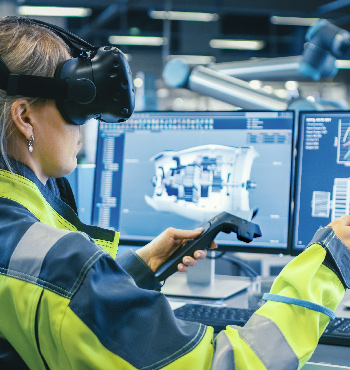
6. Increased Reliance On Predictive Maintenance
Predictive maintenance has been an ongoing trend in manufacturing, especially since high failure rates see British businesses losing up to half a million pounds a year through unplanned machine downtime. These losses are based on an expected average failure of four or five times a year, but predictive maintenance is helping to reduce these losses by up to 50%. More and more manufacturers are now instituting a maintenance schedule that incorporates data provided by the machines themselves, to anticipate and address predicted failures.
One of the great advances achieved by Industry 4.0 was the introduction of technology that could provide every machine with accurate and real-time condition monitoring of every machine. This means that the amount of wear and tear is constantly measured and analysed, so that maintenance can be scheduled before any actual failure occurs. Monitors can also be installed on such critical components as actuators and sensors, so that a warning or alarm goes off if the equipment deviates from its normal operating condition. Whoever is responsible will be immediately put in possession of the machine status via remote link. They’ll be able to take swift action, thus eliminating or significantly reducing machine downtime.
7. Moving Deeper Into The IIoT
The IoT (Internet of Things) and its industry partner the IIoT (Industrial IoT) are becoming more widespread, particularly after the year of crisis. Remote communications and collaboration have developed to a much greater level of efficiency during 2020, and IIoT continues to feature in the top 2021 manufacturing trends. Using remote communication links, machine operators and maintenance personnel can easily access local information via HMI (Human Machine Interface), or by remote visualisation, such as videos or embedded PDFs.
We have already seen how assistive technologies are protecting the safety of service technicians and customers alike, but sometimes a site visit is unavoidable. In such cases, IIoT networks and devices will enable technicians to study the problem remotely, and identify potential solutions before ever they set foot on-site. Once there, they can observe all necessary precautions, and will be equipped to deal with the issue far more quickly.
8. Greater Exploitation Of Big Data And Real-Time Analytics
The IIoT allows manufacturers to collect and analyse real-time data in order to make better-informed decisions, assisted by machine learning algorithms that can analyse vast quantities of information (big data). This helps them to achieve goals such as improved safety, enhanced efficiency, product innovation and reduced costs. Big data and machine learning will use the various data streams generated by the network of connected devices to improve M2M (machine-to-machine) communication, and to further streamline production and workflow.
Almost every part of the production process is coming to rely on big data to generate real-time insights. Data collection from multiple sensory sources is being combined with machine learning and the increasingly powerful capabilities of cloud computing. This allows manufacturers to analyse and manipulate data to gain a more comprehensive grasp of their business. In 2021 this will be an essential factor as they attempt to develop a successful strategy for the post-pandemic future.
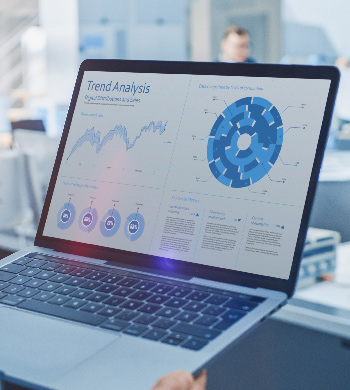
9. Advances In Resource Planning
COVID-19 has had a significant impact on manufacturers and the way they engage with resource planning systems. IIoT technology will further increase the capacity and accuracy of these systems, so that more processes will be streamlined through automation. Businesses are also turning to agile power applications which can be layered on top of existing systems, and adapt to the constantly changing circumstances demanded by the management of the pandemic. New apps are being developed very rapidly to manage everything from back-to-work strategies to employee safety. These function as temporary solutions that supplement existing systems without requiring a protracted development process.
10. Changes In Supply Chain And Sourcing Of Materials
Supply chain technology will continue to advance, with increased use of RFID tracking and the transparency offered by blockchain. Manufacturers will have better control of the source materials and inventory, with more overall visibility throughout the supply chain. Blockchain also guarantees the authenticity of critical documents and credentials, while smart contracts will help to speed up and secure transactions, and generally improve customer satisfaction.
COVID-19 has vastly impacted the way we work and forced us to revise our plans for the way we will be working in the future. This is reflected in the outlook for the forthcoming year.
Get More From Rowse Straight To Your Inbox

